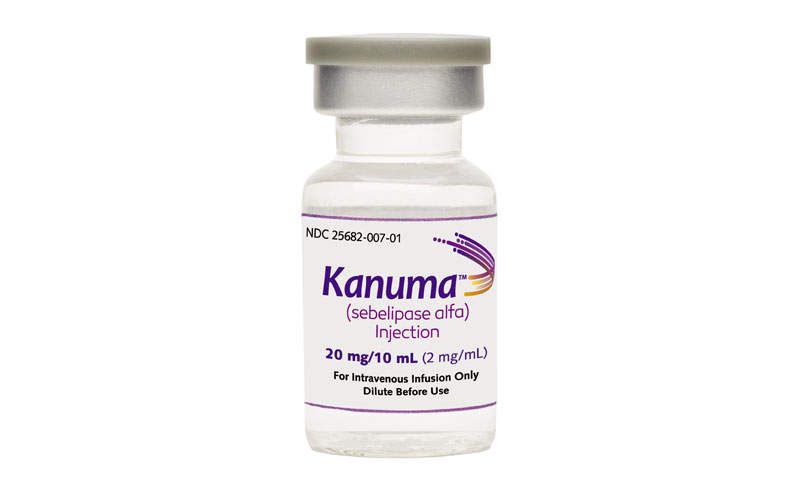Europa Bioproducts specialises in the distribution of enzymes, kits and reagents used in the characterisation and analysis of the glycosylation patterns of therapeutic proteins and monoclonal antibodies.
Post-translational modification
Post-translational modification is important to characterise and monitor because glycosylation has a significant impact on the efficacy, pharmokinetics and safety of the drug. Our products have been validated by EMEA and FDA approved biopharmaceutical companies in accordance with the ICH guidelines, ICH Q6b.
Our manufacturing partner is ProZyme, which has a division specialising in glycobiology. ProZyme purchased the Glyko™ product range in 2003.
Our products allow companies to perform the following glycoprotein analyses.
Oligosaccharide (glycan) profiling
Oligosaccharide (glycan) profiling is usually the starting point for characterising glycoproteins. This technique resolves the glycans released from a glycoprotein into a unique profile on HPLC. This is used to identify the presence of glycosylation and the heterogeneity of the glycans present. Oligosaccharide profiling is the most sensitive means to monitor changes in the glycosylation of a glycoprotein produced under different conditions.
Oligosaccharide (glycan) sequencing
Oligosaccharide (glycan) sequencing uses specific enzymes for the release of terminal non-reducing monosaccharides, in order to determine the linear structure of a glycan. Further information on the linkages connecting the monosccharides can be determined using linkage-specific enzymes.
Monosaccharide composition
Monosaccharide composition is used to determine the molar ratios of monosaccharides, and can be used to indicate the types of glycans present. For instance, the presence of GalNAc indicates O-linked glycans, while the presence of sialic acid suggests highly processed, complex type, N-linked glycans.
Analysis of glycoproteins involves the following steps.
Glycan release using N-Glycanase™ (recombinant PNGase F)
The first step is the release of the N-linked glycans from the glycoprotein using N-Glycanase™ (recombinant PNGase F) after overnight incubation. To speed up this process, ProZyme has developed a convenient kit (RDK kit) for the rapid deglycosylation of monoclonal antibodies within one to two hours.
O-linked glycans are released using our GlycoRelease glycan hydrazinolysis kit. Sialic acids are released by mild acid hydolysis or sialidase A digestion. Monosaccharides are released by acid hydrolysis. For fluorescent labelling of the glycan, a free reducing end must be preserved.
Desalting glycans using a solid phase extraction (SPE) cartridge
For desalting the glycans we recommend the GlycoClean H cartridge, an SPE cartridge containing a porous graphite carbon matrix. This is considered necessary prior to mass spectrometry as it has been shown that it enhances the recovery of glycans after the labelling step.
Glycan labelling kits
For a sensitive, quantitative analysis, glyans must be labelled with a fluorescent label by reductive amination at the free reducing end. Our Signal labelling kits are optimised to produce no detectable loss of sialic acid, fucose, sulphate or phosphate. Picomolar quantitation of the glycans is possible. We have 2-AA (for monosaccharide composition), 2-AB (for oligosaccharide / glycan profiling) and DMB (for sialic acids) Signal labelling kits.
Purification of labelled glycans
For purification of labelled glycans, we recommend using the GlycoClean S cartridge, a hydrophilic matrix that binds the glycans, allowing the non-glycan contaminants and excess label to pass through. After washing the cartridge, clean glycans are eluted. To speed up the process, ProZyme has developed two new mini GlycoClean cartridges, called S-plus and G cartridges, which must be used with the GlycoClean vacuum manifold.
Profiling of labelled glycans
The purified, labelled glycans can be separated based on different structural characteristics of the glycan. Typically, hydrophilicity (determined largely by the size of the glycan and to a lesser extent by arm specificity and linkage) is the basis of separation using the GlycoSep N column. The GlycoSep C column, being a weak anion exchange column, separates glycans on the basis of charge. Often 2-AB labelled glycans are profiled in tandem using both columns.
2-AB labelled dextran ladder
Preliminary identification can be achieved by calibrating the column with a 2-AB labelled dextran ladder and comparing retention times to known standards or databases. Monosaccharide composition and sialic acid characterisation is achieved using the GlycoSep R (reverse phase) column.
Glycans sequencing
The final step is to sequence the glycans. A glycans sequence can be determined by performing a step-wise enzymetic digest on the isolated, labelled glycan using a predetermined group of exoglycosidases. After digestion each glycan mix is separated by HPLC and the change in retention times of the monosaccharides released can be used to calculate the sequence.
Purchase of ProZyme’s N-Glycanase (PNGase F), Signal 2-AB labelling kit and the GlycoRelease glycan hydrazinolysis kit includes a licence, under ProZyme’s patents, for in-house use only.


